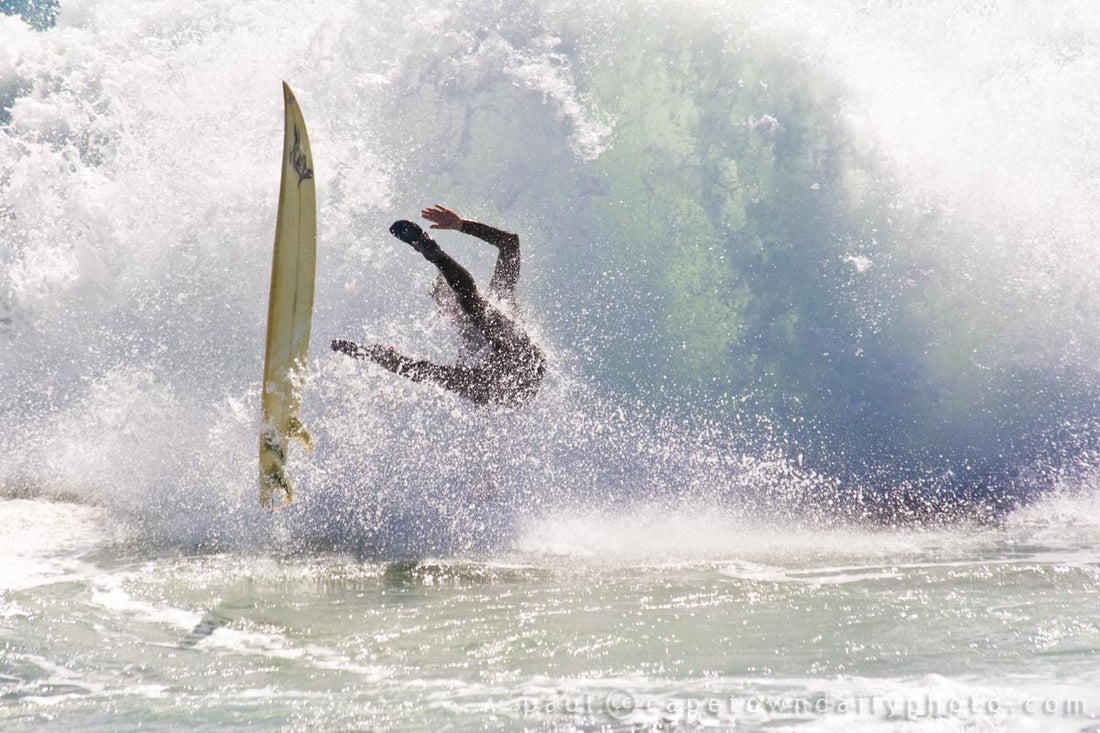The beach is always fun. Watching surfers tussle with big waves is thrilling and interesting. On my part though, I enjoy the bikinis and the Surfboard art more than other surfers. The crashes and the wipe outs look amazing while you are watching, but it is a whole new feeling when you are experiencing them; Not amazing.
There are a lot of things that you need to protect yourself from when surfing. Fin cuts, jelly fish stings, stingray barbs to the shin and falling. I cannot cover all of them at once, so this is part one of two. I will share my personal experiences and tell you how to protect yourself during a wipe out.
Wipe out? What to do
The rule of the thumb is to first protect your head when you go under water. You can do this by having your arms in front of your face and your hands over your head until you get to the surface again. This might take some time depending on the intensity of the wave. Fitness is of great importance if you are to survive a wipe out. Basic surfing fitness needs you to be able to hold your breath for longer and the very least, you should not get muscle cramps.
Disrupt Sports has a few tips on How you can avoid cramps during surfing while Freediver Youburr has made a great video on how you can train yourself to hold your breath.

Holding your breath during a wipe out is very important
After successfully holding your breath and you end up onto the surface, your board and other surfers are your biggest risk. You have to be on the lookout not to crash into your board, or worse, another surfer’s board. Being scalped by the fins of your board will make you bleed like crazy, so you will want to avoid that. In a brief summary, the risks involved are:
- Dings – if your board collides with another surfer, hits you or crashes to the ocean floor, there is a possibility it will come out with a ding. Despite it being fixable, it might render your board unusable for some time.
- Broken boards – the waves may appear fun from the shore, but when you take it head on, you will be surprised by the power the waves carry. The lips of the waves have so much power that they can break the board to pieces.
- Broken Neck – when you wipe out and fall head first into the water, you risk hitting the bottom. Depending on several factors, you might come out with a few scalps or worse, risk getting paralyzed.
- Cuts and scalps – surfboard fins are sharp, the nose of some surfboards is equally sharp and they possess a very big risk. Don’t forget that when the board snaps, it will be jagged into small pieces which are very dangerous to your skin.

- A poor wipe out can leave you nursing a major cut
- Drowning – well, though not very common, given the hardworking lifeguards on most beaches, we still have dozens of surfers who drown in the ocean. This is the worst case scenario of a poor wipe out. Disrupt sports identified "lacking swimming skills" as one of the common mistakes to avoid before surfing
- Other surfers – hitting another surfer will result in any of the above scenarios only that in this case, they will be two of you to bear the blunt of surfing.
The 3 Ws during a wipe out
Where is your board?
You should at any given time know where your board is. Your board will be most dangerous when it ends up between you and the wave. When the wave catches it, it will be pushed at you. Keep your eyes on the board and your hands, ready to protect yourself.

When you wipe out make sure to fall away from your surfboard.
What lurks at the bottom?
If you are surfing above a sandy bottom, you can push yourself up at the bottom of the sea, but if you are surfing above a reef, you will want to avoid the sharp edges and rocks that can cut your foot. Andrew Nathanson, writing for inertia.com, advises young surfers to always fall flat in order to provide cushioning. In his post, Surf Survival Guide: 7 Tips to Avoid Injury, Nathanson notes that diving might lead to injuries if you hit the bottom.
Where is everyone?
If you are surfing in the company of other surfers, their boards can become a risk to you when you wipe out. Always stay aware of their whereabouts when you surf. You never know when everything will go wrong.
Who else is here?
You have to be on the lookout for any other obstacle you might encounter as you surf. Getting oriented with your surfing surroundings is easier when you swim on the same spot for long. When you decide to try out a new spot, ask other surfers what to look out for. Or, spend some time doing a visual survey. This will be the end of part one. In part two, We will see how you can wipe out like a pro. By the time you are done reading, you will be able to recover from a wipe out safely and continue to surf as if nothing happened.
If you like this post, share you experience below and be on the watch out for part two.


